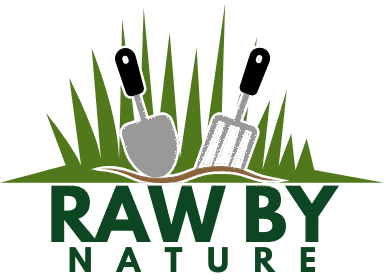Imagine stepping outside your door and being greeted by the rich aroma of fresh basil, rosemary, and thyme, each leaf brimming with flavor and possibility. Whether you’re an enthusiastic beginner eager to dip your toes into the world of gardening or a seasoned green thumb looking to expand your horticultural repertoire, building a simple herb garden can be a delightful and rewarding endeavor. Herbs are the perfect companions for any garden, offering a symphony of scents and tastes while requiring minimal space and effort. In this article, we’ll guide you through the process of creating your own herb sanctuary, from choosing the ideal location to selecting the perfect herbs for your culinary and medicinal needs.
For those new to gardening, cultivating herbs offers a gentle introduction to the joys of plant care, with their forgiving nature and quick growth providing visible rewards. Experienced gardeners, on the other hand, will find that herbs add a new dimension to their garden’s palette, enhancing both beauty and utility. As you delve into this guide, you’ll learn the essentials of soil preparation, discover tips for container gardening, and explore innovative ways to incorporate herbs into your existing garden layout. By the end, you’ll be equipped with the knowledge and confidence to nurture a thriving herb garden that brings flavor and vitality to your home.
Creating a herb garden is more than just a pastime; it’s an invitation to connect with nature and engage your senses. By growing your own herbs, you gain not only a sustainable source of fresh ingredients but also a deeper appreciation for the cycles of growth and renewal that define the gardening experience. We’ll also touch on the benefits of companion planting and share insights into maintaining your herb garden year-round. With each step, you’ll see how accessible and fulfilling this journey can be, transforming your outdoor space into a vibrant oasis of greenery and flavor.
Select a Sunny Location

When selecting a location for your herb garden, it’s crucial to find a spot that receives at least six hours of direct sunlight each day. Herbs such as basil, rosemary, and thyme thrive in sunny conditions, which help them develop robust flavors and strong growth.
Consider the orientation of your garden space to maximize sunlight exposure. South-facing gardens usually receive the most consistent sunlight, making them ideal for planting sun-loving herbs.
For those living in areas with intense afternoon sun, providing some light shade can prevent herbs from scorching. This can be achieved by using a shade cloth or strategically planting taller plants nearby to offer relief during peak sun hours.
Soil quality is just as important as sunlight when establishing a productive herb garden. Ensure your chosen spot has well-draining soil, and consider amending it with organic matter like compost to improve fertility and structure.
Gather Essential Gardening Tools

Before planting your herb garden, it’s essential to gather the right tools to make your gardening experience smooth and enjoyable. A well-equipped gardener is more likely to succeed, so consider investing in high-quality tools that will last for years.
Start with a sturdy pair of gardening gloves to protect your hands from thorns, dirt, and blisters. Look for gloves that are durable yet flexible, allowing you to handle delicate plants and small seeds with ease.
You’ll also need a hand trowel, which is indispensable for planting herbs in both containers and garden beds. Choose a trowel with a comfortable grip and a strong, pointed blade to easily dig and turn soil, especially in compacted areas.
In addition, a watering can with a long spout will help you reach plants without disturbing their roots. Opt for one with a removable rose attachment to switch between gentle showers and more direct streams, ensuring your herbs receive the right amount of water.
For maintaining your herb garden, invest in a pair of pruning shears. These will allow you to trim back overgrown herbs and encourage healthy, bushy growth. Regular pruning not only keeps your plants tidy but also enhances flavor by encouraging the growth of fresh leaves.
Finally, consider using a kneeling pad to make planting and maintaining your garden more comfortable. This simple addition can make a big difference during prolonged gardening sessions, reducing strain on your knees and back.
- Tip: Always clean your tools after use to prolong their life and prevent the spread of diseases.
- Tip for the experienced gardener: Invest in a soil pH meter to ensure your herbs are planted in the optimal soil conditions.
Choose Suitable Herb Varieties

When starting a herb garden, selecting the right herb varieties is crucial for success. Consider the climate and space you have available, as some herbs thrive better in different conditions.
Begin with easy-to-grow herbs like basil, parsley, and chives if you’re a beginner. These herbs are not only hardy but also versatile, as they grow well in most climates and require minimal care.
For those with more experience, try more specialized herbs such as rosemary or thyme. These herbs prefer well-drained soil and plenty of sunlight, making them ideal for a sunny spot in your garden.
Consider the culinary uses of each herb when making your selection. Basil and mint, for example, are excellent for summer dishes, while rosemary and sage can enhance hearty winter meals.
To ensure healthy growth, plant herbs that have similar watering and sunlight needs together. This simplifies care and helps prevent overwatering or underwatering your plants.
For those with limited space, consider planting herbs in containers. This method allows for easy mobility and control over soil conditions, ensuring that your herbs receive the right amount of nutrients and light.
Prepare Soil for Planting

Preparing your soil is a crucial first step in building a successful herb garden. Start by choosing a location with good drainage and plenty of sunlight, as herbs generally thrive in these conditions.
Next, assess the soil’s texture and composition to determine if amendments are needed. Ideally, you want a soil mix that is loamy and rich in organic matter, which promotes healthy root development.
Incorporate compost or well-rotted manure into the top 6 to 8 inches of soil to improve fertility and structure. This not only adds essential nutrients but also enhances the soil’s ability to retain moisture without becoming waterlogged.
For those with heavy clay or sandy soils, consider mixing in additional components to balance the texture. Adding coarse sand or perlite can improve drainage in clay-heavy areas, while organic matter like peat moss can help sandy soils retain more water.
Testing your soil’s pH can provide valuable insights into its suitability for herbs. Most herbs prefer a slightly acidic to neutral pH level, ranging from 6.0 to 7.0, so adjust accordingly with lime or sulfur if needed.
Water and Maintain Regularly

Regular watering is crucial for a healthy herb garden, ensuring plants receive consistent moisture. It’s important to water deeply but less frequently, allowing the soil to dry slightly between sessions, which encourages root growth.
Morning is the best time for watering, as it reduces evaporation and helps prevent fungal diseases. For a beginner, a general rule is to water your herbs every few days, adjusting based on weather conditions and soil moisture levels.
Advanced gardeners might consider installing a drip irrigation system, which delivers water directly to the roots and conserves water. Alternatively, using a moisture meter can help you determine the precise watering needs of your herbs, ensuring they receive neither too much nor too little hydration.
Maintaining your herb garden involves more than just watering; regular pruning helps encourage bushy growth. Remove dead or damaged leaves to prevent disease and promote new growth, and harvest herbs frequently to keep plants vigorous and productive.
For optimal growth, periodically check for pests and diseases, as early detection makes management easier. Using organic solutions like neem oil or insecticidal soap can help control pests without harming beneficial insects or the environment.
Lastly, adding a layer of mulch around your herbs can help retain soil moisture, suppress weeds, and regulate soil temperature. Choose organic mulches like straw or shredded bark for the best results, ensuring they don’t touch the plant stems to avoid rot.
Conclusion: Growing Success with These Plants
In summary, building a simple herb garden can enhance relationships by fostering communication, cooperation, and shared responsibility. The five key concepts covered include: setting common goals to strengthen unity, practicing patience and persistence together, celebrating small milestones, cultivating empathy through nurturing, and creating a peaceful space for connection. Each of these elements contributes to a deeper bond, offering a nurturing ground for both your garden and your relationship to flourish.
As an actionable next step, choose one herb to plant together. This small act of collaboration can spark joy and set the stage for shared success. Remember, every flourishing relationship begins with a single seed of effort.
To keep this journey at your fingertips, bookmark this article for easy reference as you embark on this enriching endeavor. Let it serve as a guide whenever you need a reminder of the simple yet profound ways gardening can enhance your relationship.
Looking forward, remember that the roots you cultivate today will support the growth of a thriving relationship tomorrow. With each herb you nurture, let it be a testament to the love and commitment that binds you. Embrace this opportunity, and watch both your garden and your relationship bloom beautifully.


